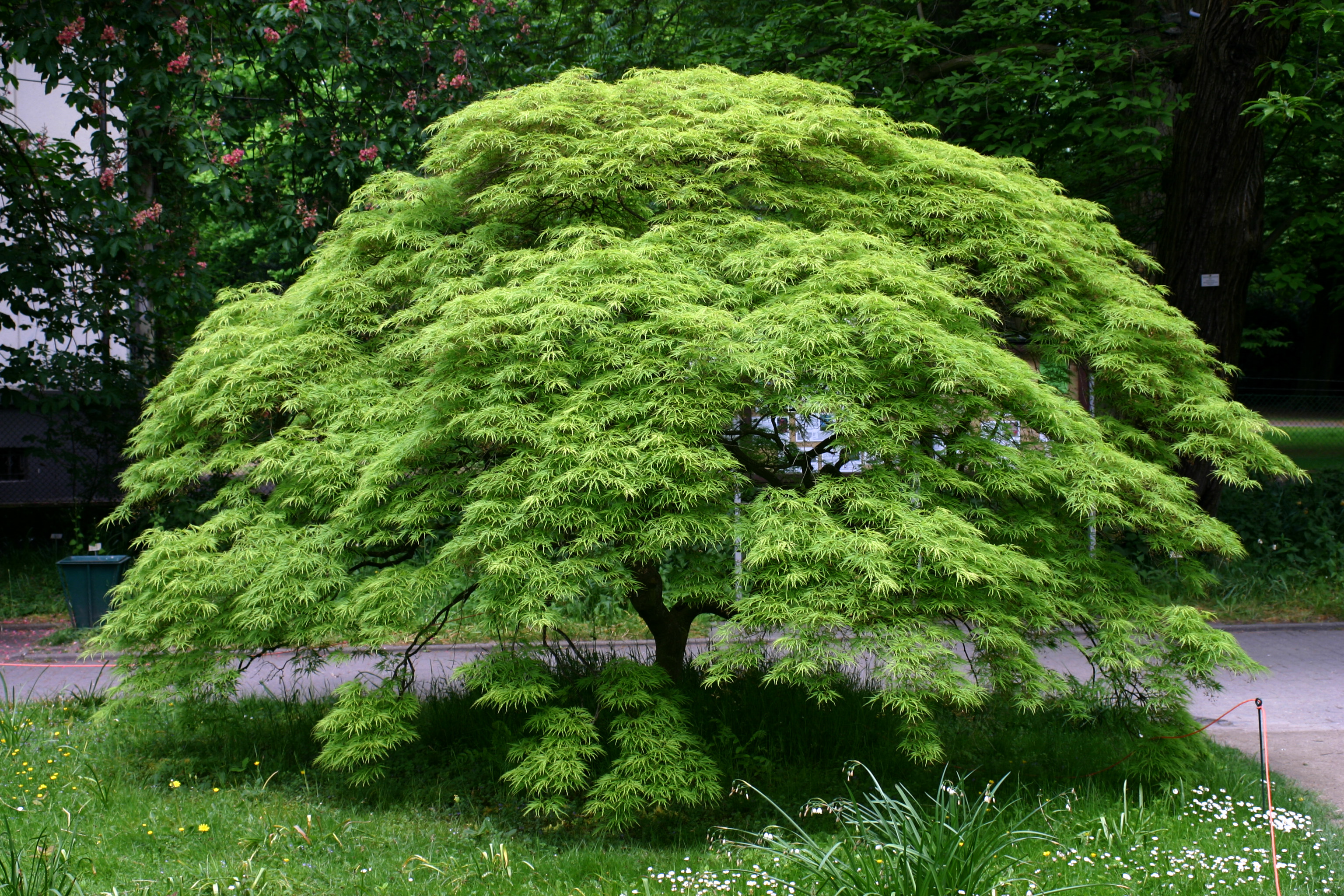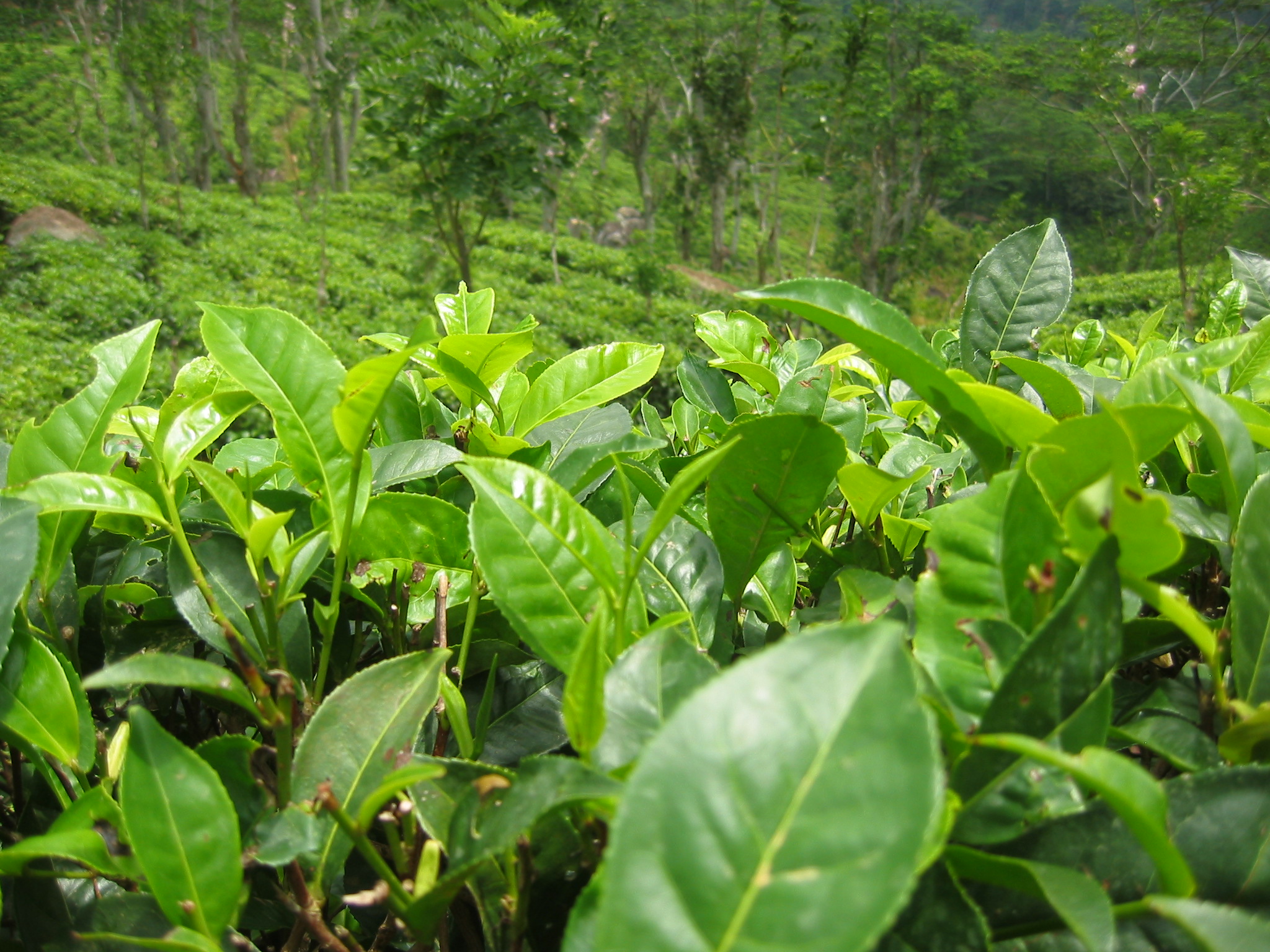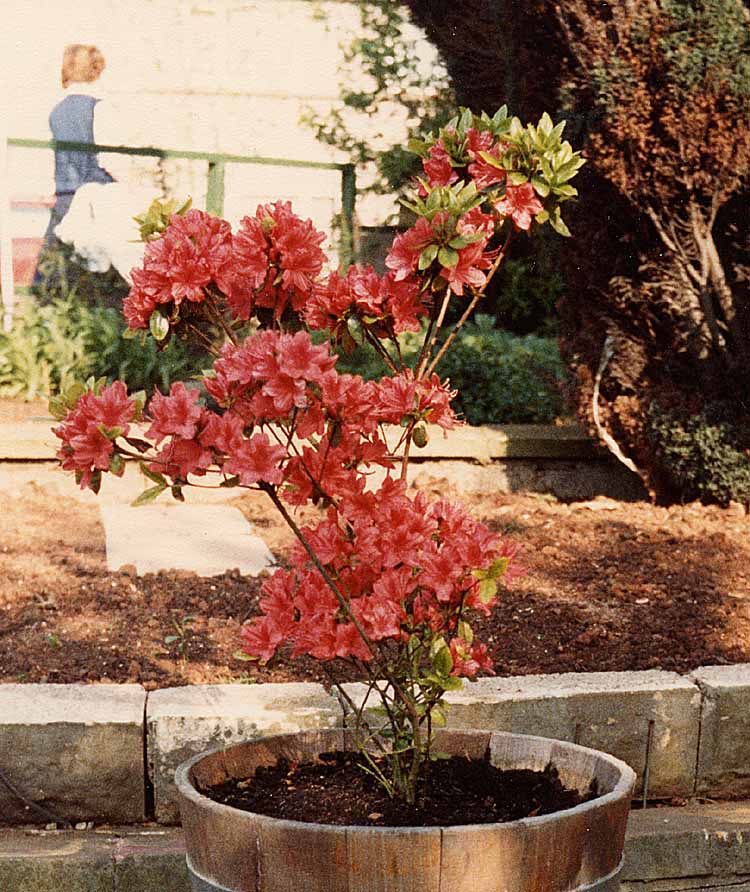|
Mast Arboretum
Mast Arboretum is a arboretum and botanical garden on the campus of Stephen F. Austin State University in Nacogdoches, Texas, one of 4 main gardens on the campus. The arboretum is open daily without charge. The arboretum began in 1985 as a landscape plant materials class project, and has grown its collections through exchanges with the Arnold Arboretum, the United States National Arboretum, the North Carolina State University Arboretum, and others. The arboretum contains more than 3,000 plant species and 20 theme gardens, including butterfly, conifer, fern, herb, heritage, and holly gardens, a pitcher plant bog, Asian valley, beehive exhibit, and a vine collection. The Ruby Mize Azalea Garden () is of particular interest: It was created between 1997–2001, and now contains some 7,000 azaleas, 200 camellias, 200 Japanese maple varieties, 180 hydrangea varieties, and 400 other rare ornamental trees and shrubs. See also * List of botanical gardens in the United States This li ... [...More Info...] [...Related Items...] OR: [Wikipedia] [Google] [Baidu] |
Arboretum
An arboretum (plural: arboreta) in a general sense is a botanical collection composed exclusively of trees of a variety of species. Originally mostly created as a section in a larger garden or park for specimens of mostly non-local species, many modern arboreta are in botanical gardens as living collections of woody plants and is intended at least in part for scientific study. In Latin, an ''arboretum'' is a place planted with trees, not necessarily in this specific sense, and "arboretum" as an English word is first recorded used by John Claudius Loudon in 1833 in ''The Gardener's Magazine'', but the concept was already long-established by then. An arboretum specializing in growing conifers is known as a pinetum. Other specialist arboreta include saliceta (willows), populeta (Populus, poplar), and querceta (oaks). Related collections include a fruticetum, from the Latin ''frutex'', meaning ''shrub'', much more often a shrubbery, and a viticetum (from the Latin ''vitis,'' meani ... [...More Info...] [...Related Items...] OR: [Wikipedia] [Google] [Baidu] |
Holly
''Ilex'' (), or holly, is a genus of over 570 species of flowering plants in the family Aquifoliaceae, and the only living genus in that family. ''Ilex'' has the most species of any woody dioecious angiosperm genus. The species are evergreen or deciduous trees, shrubs, and climbers from tropics to temperate zones worldwide. The type species is '' Ilex aquifolium'', the common European holly used in Christmas decorations and cards. Description The genus ''Ilex'' is divided into three subgenera: *''Ilex'' subg. ''Byronia'', with the type species ''Ilex polypyrena'' *''Ilex'' subg. ''Prinos'', with 12 species *''Ilex'' subg. ''Ilex'', with the rest of the species The genus is widespread throughout the temperate and subtropical regions of the world. It includes species of trees, shrubs, and climbers, with evergreen or deciduous foliage and inconspicuous flowers. Its range was more extended in the Tertiary period and many species are adapted to laurel forest habitats. It occurs ... [...More Info...] [...Related Items...] OR: [Wikipedia] [Google] [Baidu] |
Botanical Gardens In Texas
Botany, also called , plant biology or phytology, is the science of plant life and a branch of biology. A botanist, plant scientist or phytologist is a scientist who specialises in this field. The term "botany" comes from the Ancient Greek word (''botanē'') meaning "pasture", " herbs" "grass", or " fodder"; is in turn derived from (), "to feed" or "to graze". Traditionally, botany has also included the study of fungi and algae by mycologists and phycologists respectively, with the study of these three groups of organisms remaining within the sphere of interest of the International Botanical Congress. Nowadays, botanists (in the strict sense) study approximately 410,000 species of land plants of which some 391,000 species are vascular plants (including approximately 369,000 species of flowering plants), and approximately 20,000 are bryophytes. Botany originated in prehistory as herbalism with the efforts of early humans to identify – and later cultivate – edible ... [...More Info...] [...Related Items...] OR: [Wikipedia] [Google] [Baidu] |
Arboreta In Texas
An arboretum (plural: arboreta) in a general sense is a botanical collection composed exclusively of trees of a variety of species. Originally mostly created as a section in a larger garden or park for specimens of mostly non-local species, many modern arboreta are in botanical gardens as living collections of woody plants and is intended at least in part for scientific study. In Latin, an ''arboretum'' is a place planted with trees, not necessarily in this specific sense, and "arboretum" as an English word is first recorded used by John Claudius Loudon in 1833 in ''The Gardener's Magazine'', but the concept was already long-established by then. An arboretum specializing in growing conifers is known as a pinetum. Other specialist arboreta include saliceta (willows), populeta (Populus, poplar), and querceta (oaks). Related collections include a fruticetum, from the Latin ''frutex'', meaning ''shrub'', much more often a shrubbery, and a viticetum (from the Latin ''vitis,'' meani ... [...More Info...] [...Related Items...] OR: [Wikipedia] [Google] [Baidu] |
List Of Botanical Gardens In The United States
This list is intended to include all significant botanical gardens and arboretums in the United States.BGCI Garden Search |
Hydrangea
''Hydrangea'', () commonly named the hortensia, is a genus of over 75 species of flowering plants native to Asia and the Americas. By far the greatest species diversity is in eastern Asia, notably China, Korea, and Japan. Most are shrubs tall, but some are small trees, and others lianas reaching up to by climbing up trees. They can be either deciduous or evergreen, though the widely cultivated temperate species are all deciduous. ''Hydrangea'' is derived from Greek and means ‘water vessel’ (from ''húdōr'' "water" + ''ángos'' or ''angeîon'' "vessel"), in reference to the shape of its seed capsules. The earlier name, ''Hortensia'', is a Latinised version of the French given name Hortense, honoring French astronomer and mathematician Nicole-Reine Hortense Lepaute. This claim is disputed in page 88 on citation 10 at Nicole-Reine Hortense Lepaute page, which says: "Larousse considers this an injustice, and remarks that it has led many persons to the erroneous notion tha ... [...More Info...] [...Related Items...] OR: [Wikipedia] [Google] [Baidu] |
Japanese Maple
''Acer palmatum'', commonly known as Japanese maple, palmate maple, or smooth Japanese maple (Japanese: ''irohamomiji'', , or ''momiji'', (栴), is a species of woody plant native to Japan, Korea, China, eastern Mongolia, and southeast Russia. Many different cultivars of this maple have been selected and they are grown worldwide for their large variety of attractive forms, leaf shapes, and spectacular colors. Description ''Acer palmatum'' is a deciduous shrub or small tree reaching heights of , rarely , reaching a mature width of , often growing as an understory plant in shady woodlands. It may have multiple trunks joining close to the ground. In habit, its canopy often takes on a dome-like form, especially when mature.van Gelderen, C.J. & van Gelderen, D.M. (1999). ''Maples for Gardens: A Color Encyclopedia''. The leaves are long and wide, palmately lobed with five, seven, or nine acutely pointed lobes. The flowers are produced in small cymes, the individual flowers with fiv ... [...More Info...] [...Related Items...] OR: [Wikipedia] [Google] [Baidu] |
Camellia
''Camellia'' (pronounced or ) is a genus of flowering plants in the family Theaceae. They are found in eastern and southern Asia, from the Himalayas east to Japan and Indonesia. There are more than 220 described species, with some controversy over the exact number, and also around 3,000 hybrids. The genus was named by Linnaeus after the Jesuit botanist Georg Joseph Kamel, who worked in the Philippines and described a species of camellia (although Linnaeus did not refer to Kamel's account when discussing the genus). Of economic importance in East Asia, Southeast Asia, and the Indian subcontinent, leaves of '' C. sinensis'' are processed to create the popular beverage tea. The ornamental '' C. japonica'', '' C. sasanqua'' and their hybrids are the source of hundreds of garden cultivars. '' C. oleifera'' produces tea seed oil, used in cooking and cosmetics. Descriptions Camellias are evergreen shrubs or small trees up to tall. Their leaves are alternately arranged, simple, t ... [...More Info...] [...Related Items...] OR: [Wikipedia] [Google] [Baidu] |
Azalea
Azaleas are flowering shrubs in the genus ''Rhododendron'', particularly the former sections ''Tsutsusi'' (evergreen) and '' Pentanthera'' (deciduous). Azaleas bloom in the spring (April and May in the temperate Northern Hemisphere, and October and November in the Southern Hemisphere), their flowers often lasting several weeks. Shade tolerant, they prefer living near or under trees. They are part of the family Ericaceae. Cultivation Plant enthusiasts have selectively bred azaleas for hundreds of years. This human selection has produced over 10,000 different cultivars which are propagated by cuttings. Azalea seeds can also be collected and germinated. Azaleas are generally slow-growing and do best in well-drained acidic soil (4.5–6.0 pH). Fertilizer needs are low. Some species need regular pruning. Azaleas are native to several continents including Asia, Europe and North America. They are planted abundantly as ornamentals in the southeastern US, southern Asia, and parts o ... [...More Info...] [...Related Items...] OR: [Wikipedia] [Google] [Baidu] |
Pitcher Plant
Pitcher plants are several different carnivorous plants which have modified leaves known as pitfall traps—a prey-trapping mechanism featuring a deep cavity filled with digestive liquid. The traps of what are considered to be "true" pitcher plants are formed by specialized leaves. The plants attract and drown their prey with nectar. Types The term "pitcher plant" generally refers to members of the Nepenthaceae and Sarraceniaceae families, but similar pitfall traps are employed by the monotypic Cephalotaceae and some members of the Bromeliaceae. The families Nepenthaceae and Sarraceniaceae are the most species-rich families of pitcher plants. The Nepenthaceae contains a single genus, '' Nepenthes'', containing over 100 species and numerous hybrids and cultivars. In this genus of Old World pitcher plants, the pitchers are borne at the end of tendrils that extend from the midrib of an otherwise unexceptional leaf. Old World pitcher plants are typically characterized as havin ... [...More Info...] [...Related Items...] OR: [Wikipedia] [Google] [Baidu] |
Natural Heritage
Natural heritage refers to the sum total of the elements of biodiversity, including flora and fauna, ecosystems and geological structures. It forms part of our natural resources. Definition Heritage is that which is ''inherited'' from past generations, maintained in the present, and bestowed to future generations. The term "natural heritage", derived from "natural inheritance", pre-dates the term "biodiversity". It is a less scientific term and more easily comprehended in some ways by the wider audience interested in conservation. The term was used in this context in the United States when Jimmy Carter set up the Georgia Heritage Trust while he was governor of Georgia; Carter's trust dealt with both natural and cultural heritage. It would appear that Carter picked the term up from Lyndon Johnson, who used it in a 1966 Message to Congress. (He may have gotten the term from his wife Lady Bird Johnson who was personally interested in conservation.) President Johnson signed the W ... [...More Info...] [...Related Items...] OR: [Wikipedia] [Google] [Baidu] |
Botanical Garden
A botanical garden or botanic gardenThe terms ''botanic'' and ''botanical'' and ''garden'' or ''gardens'' are used more-or-less interchangeably, although the word ''botanic'' is generally reserved for the earlier, more traditional gardens, and is the more usual term in the United Kingdom. is a garden with a documented collection of living plants for the purpose of scientific research, conservation, display, and education. Typically plants are labelled with their botanical names. It may contain specialist plant collections such as cactus, cacti and other succulent plants, herb gardens, plants from particular parts of the world, and so on; there may be greenhouses, shadehouses, again with special collections such as tropical plants, alpine plants, or other exotic plants. Most are at least partly open to the public, and may offer guided tours, educational displays, art exhibitions, book rooms, open-air theatrical and musical performances, and other entertainment. Botanical gard ... [...More Info...] [...Related Items...] OR: [Wikipedia] [Google] [Baidu] |








